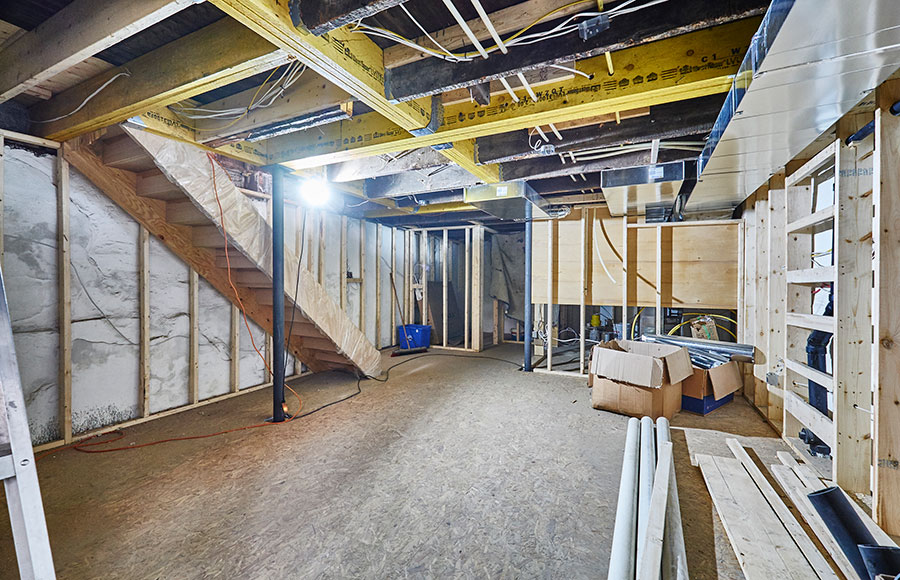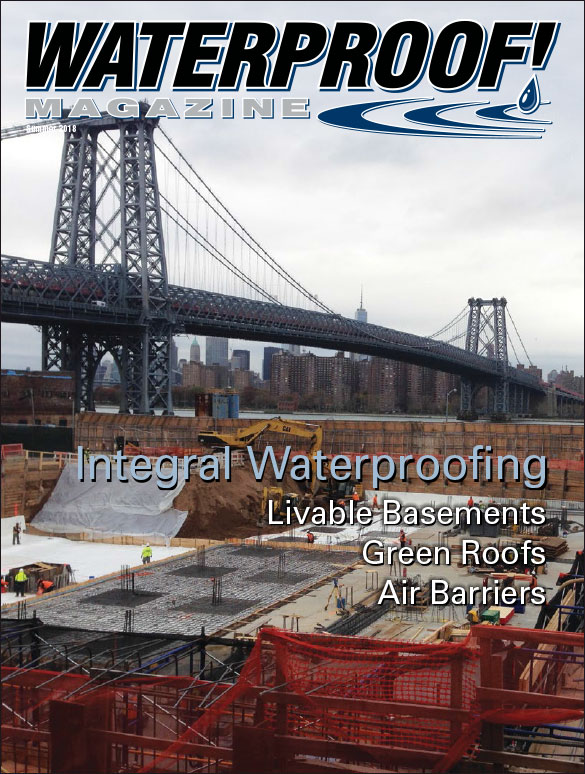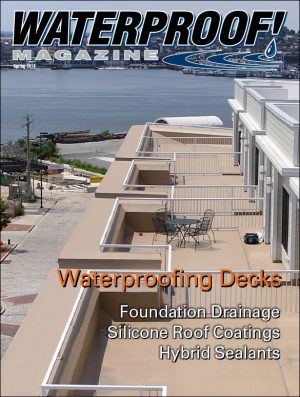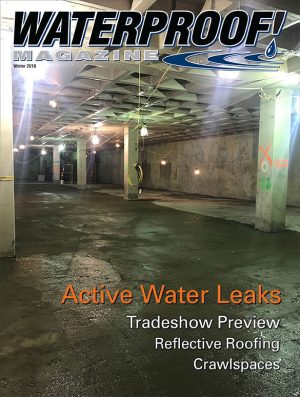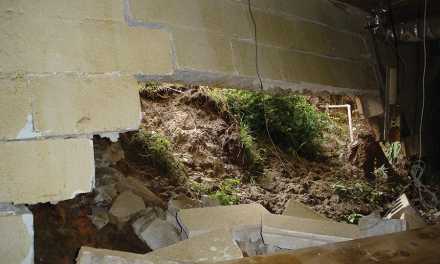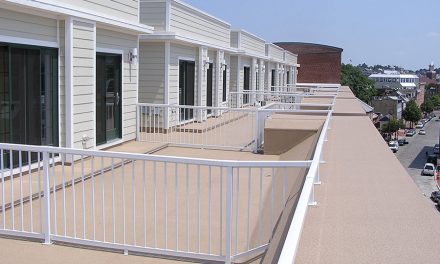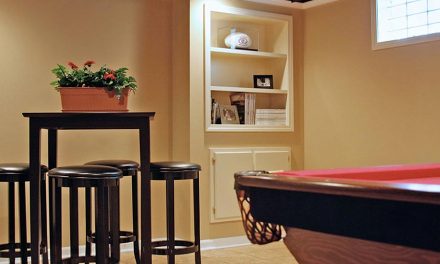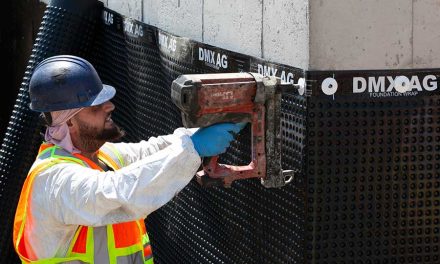By Vanessa Salvia
Behind-the-scenes choices for a comfortable space.
It can. Finishing a basement takes some thought and planning, but when the right decisions are made the basement can become so much more than just foundational support.
“As real estate becomes very expensive people want to move into their basement to expand their livable space,” explains Joe Boccia, vice president of Boccia Brothers Waterproofing, in business since 1955 in New York. “When people do that, they introduce sheetrock, framing, couches, carpets and all of these things that are food for mold.”
Boccia likens not taking precautions to protect a basement against water intrusion as buying a car and not having collision protection. “It behooves you to protect your basement. Before you finish your basement call a qualified waterproofing company that has been in business for a long time to assess your situation and make recommendations.”
Boccia stresses the importance of working with a well-established company so that they will remain in business long enough to stand behind their workmanship guarantees, if you ever needed them to. “There are some companies out there, including ours, that give lifetime warranties,” he says, “so you know it will work forever.”
Subflooring
Bob Smith, product developer at Dricore, offers a moisture barrier subfloor, injected crack sealant and wall system specifically made for basements. “For finishing a basement, the best approach is assume you have a moisture problem and make sure you deal with it before you put in carpet and furniture or else it’s going to end badly,” Smith says.

The importance of a subfloor was underestimated 15 years ago. A concrete floor will always wick moisture from the earth, even if it doesn’t seem like it is. “You won’t see it in the form of water unless you actually have a leak but it’s always going to be there,” Smith says. “People will say, ‘My basement’s bone dry, we’ve never had a problem,’ then they finish the basement and put carpet and underpads directly on the concrete slab and a year later they’re smelling that musty moldy smell. It’s because moisture is coming through the slab and it’s being trapped by the carpet.”
If anyone needs to see the moisture for themselves, simply tape a piece of polyethylene on the slab and revisit it a couple of weeks later. “In almost every instance, unless you’re in an exceptional dry area, you will find water droplets on the back of that plastic,” says Smith. “That’s the moisture coming through that concrete.”
Sealing The Cracks
Sealing foundation cracks is a key part of finishing a basement. Radon is an invisible and odorless radioactive gas caused by decaying uranium in the soil. Because radon is heavier than air, it concentrates in lower-level places like basements, where it seeps in through cracks.
Cracks can also threaten the strength of basement walls. Luke Secrest, founder and general manager of Rhino Carbon Fiber, says many people don’t realize the impact that finished basements can have on the freeze-thaw cycle that basement walls can be exposed to.

“What a lot of people don’t realize is when they finish their basement to code they have reduced heat loss through those walls,” Secrest explains. “You have to meet building code and when you do that you’re reducing that heat loss so there is no avoiding it.”
When ground freezes it expands, and when there is less heat escaping from a basement, the ground can freeze even harder. Rhino has different products to address basement issues, depending on whether the wall is bowed or cracked, and the type of cracking displayed. People can also proactively choose Rhino’s reinforcing products to ensure that their basement finishing doesn’t create a problem.
“Being in the repair business we’ve seen people take a section of their walls out and expose huge cracks, scary stuff,” he says. “People are using our products on basements that don’t have a cracking problem because they don’t want to create a problem.”
Egress Windows
Windows are nice, but the building code requires windows for more than fresh air and natural light. Windows must be in certain locations and meet certain dimensions as a way for firefighters to enter a structure while loaded down with all their gear and as an emergency exit.
“A window sill can be a maximum of 44 inches above the finished floor and for a small child or a shorter person that can be tall,” explains Jim Edgeworth, Bilco’s director of sales and marketing for residential products, in Ohio. The homeowner can accommodate this by building in a way that allows for a piece of furniture to be placed nearby which can act as a step.

A 4’x4’ egress window is the most popular size, but they can be larger. It’s easier to add foundational windows to a new building, but they can be added to an existing structure.
“Simply meeting the code is one thing,” says Edgeworth, “but the best decision is to map out two or even three egress window wells along with things like where the furniture will go and where the hot water tank is, because windows change the envelope of the below grade living space with a light source and fresh air.”
Dehumidifers and Ventilation
Erika Lacroix, president of EZ Breathe Ventilation Systems, says that basement ventilation can impact the health of the entire building. Their parent waterproofing company has been in the basement waterproofing business for 40 years and started including the EZ Breathe Ventilation System about 20 years ago. It exhausts the stagnant air and uses ventilation to replace the humid, dirty, basement air with cleaner, drier air from upstairs. Doing this, Lacroix says, reduces humidity, radon, mold and mildew smells, and improves allergy and asthma symptoms for those who live in the house.

“Not all of our customers need basement waterproofing but many have issues with stagnant air, sweaty windows, musty odors and other sick home symptoms,” she says.
Dehumidification, though, is something that’s part of any good waterproofing or basement finishing system, and there are different ways to attack that problem as well.
Boccia says if the house has a central air system, an HVAC contractor can incorporate air conditioning in the basement and sometimes that is sufficient to dehumidify the basement area. For larger sized spaces, a basement-specific system is often needed.
“We recommend self-draining dehumidification systems so you don’t have to go down and empty the bucket,” Boccia explains. “You set it up, set the humidistat for 55 percent and you leave it alone. It’s just like your heating and AC in that you set it, it kicks on and turns off and auto-drains.”
AHAM, the Association of Home Appliance Manufacturers, has guidelines for 2,500-square-foot spaces depending on the moisture level. A moderately damp home should use a system that can remove 26 pints per hour; very damp, 32 pints; wet, 38 pints; and extremely wet, 44 pints.
Insulation
The amount and type of insulation needed varies greatly, mostly depending on the building code requirements and the climate zone of the home.
Spray foam works well for areas that are notorious for air leakeage—such as rim joists—which can lead to high energy bills says John Broniek, engineering manager of Icynene’s foam insulation products.
“Open cell insulation is a more flexible, airtight insulation product,” Broniek explains. “It can have an R-value between 3.7 to 4 per inch and it is vapor permeable, which means if it’s part of an assembly that happens to get wet, the open cell foam will not trap that moisture over the long term. It will allow that assembly to dry out.”

Closed cell spray foam provides a higher R value of around 7, and it is dense enough to also function as an impermeable vapor barrier,” Broniek explains. “That can be good to have particularly if there’s a lot of what I call moisture-generating activity in the basement room, because if that moisture contacts the cold concrete foundation wall, it could condense. The closed cell insulation does a very good job of protecting the wall in that system because it’s an air barrier and a vapor barrier.”
Only closed cell insulation should be used on the exterior side of a basement wall, and in particularly cold climates this extra impermeability is often advised. “Spray foam can be used on the exterior basement wall as insulation, but it would need to be supplemented with some kind of waterproofing system to make sure that ground water and rain water doesn’t get into the basement area,” says Broniek.
Pricewise, closed cell foam is more expensive, because of the denser material and the higher R-value. Open cell is often a fine choice where the wall needs insulating and doesn’t need a vapor barrier, as long as water from the outdoors can’t get through to the open cell insulation.

This complexity regarding the movement of air and water is a reason that experts should be consulted to help make sure that all factors are considered and the finished basement decisions are made as a whole.
When it comes to your finished basement, some of the most important decisions are made for wall and floor systems behind the scenes, for what goes on underneath your couch, pool table and drink station that no one else will ever see. But once those are made, you can rest assured that your carpet, furniture and whatever treasured objects you have stored down there will remain in good shape for years to come. Σ
Vanessa Salvia is a freelance writer specializing in the construction industry. Based in Eugene, Oregon, her work has appeared in numerous national and regional publications.
Summer 2018 Back Issue
$4.95
Livable Basements
AVAILABLE AS DIGITAL DOWNLOAD ONLY
Description
Description
Additional Info
Additional information
| Magazine Format | Digital Download Magazine, Print Mailed Magazine |
|---|

